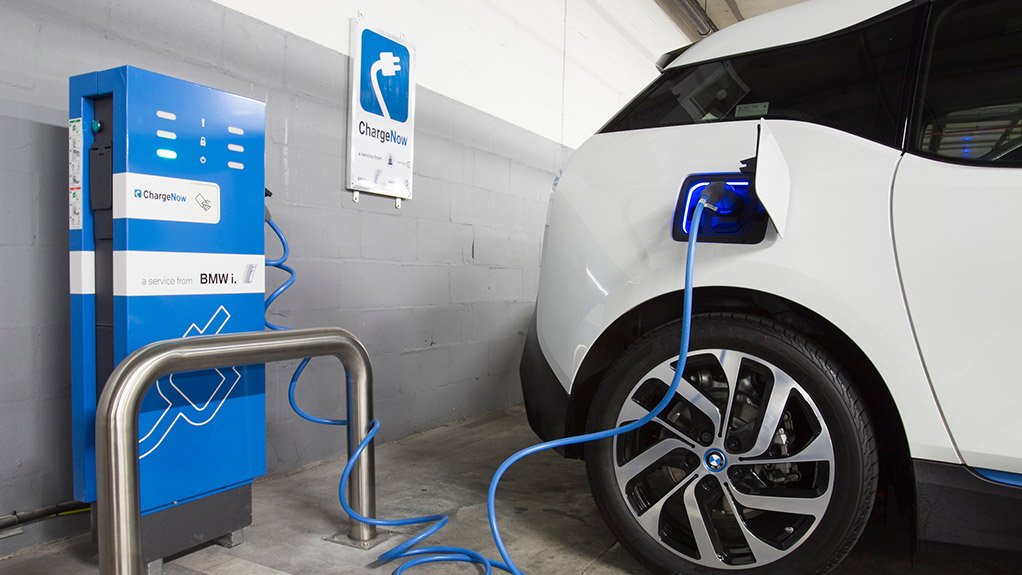The International Energy Agency’s (IEA’s) ‘Global Electric Vehicles Outlook’ has found that the number of electric and plug-in hybrid cars on the world’s roads exceeded three-million in 2017, which is a 54% increase compared with 2016.
China remained the largest electric vehicle (EV) market in the world, accounting for half sold last year. Nearly 580 000 EVs were sold in China in 2017, a 72% increase from 2016.
The US had the second-highest EV market, with about 280 000 cars sold in 2017, up from 160 000 in 2016.
Nordic countries remain leaders in market share. EVs accounted for 39% of new-car sales in Norway, making it the world leader in terms of EV market share.
In Iceland, new EV sales were 12% of the total, while market share reached 6% in Sweden. Germany and Japan also saw strong growth, with sales more than doubling in both countries from their 2016 levels.
The IEA report stated that electric mobility is not limited to cars; in 2017, the stock of electric buses rose to 370 000 from 345 000 in 2016, and the number of electric two-wheelers reached 250-million.
The electrification of these modes of transport has been driven almost entirely by China, which accounts for more than 99% of both electric bus and electric two-wheeler stock; however, registrations in Europe and India are growing.
Charging infrastructure is also keeping pace, says the IEA. In 2017, the number of private chargers at home and workplaces was estimated at almost three-million worldwide.
In addition, there were about 430 000 publically accessible chargers worldwide in 2017, a quarter of which were fast chargers. Fast chargers are especially important in densely populated cities and serve an essential role in boosting the appeal of EVs by enabling long-distance travel.
The growth of EVs has largely been driven by government policy, including public procurement programmes, financial incentives reducing the cost of buying EVs, tightened fuel-economy standards and regulations on the emission of local pollutants, low- and zero-emission vehicle mandates and a variety of local measures, such as restrictions on the circulation of vehicles based on their pollutant emission performances.
The rapid uptake of EVs has also been helped by progress made in recent years to improve the performance and reduce the costs of producing lithium-ion batteries.
However, further battery cost reductions and performance improvements are essential to improve the appeal of EVs. These are achievable with a combination of improved chemistries, increased production scale and battery sizes, according to the report.
Further improvements are also possible with the transition to technologies beyond lithium-ion.
Innovations in battery chemistry will be needed to maintain growth, as there are supply issues with core elements that make up lithium-ion batteries, such as nickel, lithium and cobalt.
The supply of cobalt is particularly subject to risks, as almost 60% of the global production of cobalt is currently concentrated in the Democratic Republic of Congo.
Additionally, the capacity to refine and process raw cobalt is highly concentrated, with China controlling 90% of refining capacity. Even accounting for ongoing developments in battery chemistry, cobalt demand for EVs is expected to be between 10 and 25 times higher than current levels by 2030.
The IEA outlook notes that ensuring the increased uptake of EVs, while meeting social and environmental sustainability goals, requires the adoption and enforcement of minimum standards on labour and environmental conditions. The environmental sustainability of batteries also requires the improvement of end-of-life and material recycling processes.
Looking forward, supportive policies and cost reductions are likely to lead to continued significant growth in the EV market. In the IEA’s new policies scenario, which takes into account current and planned policies, the number of electric cars is projected to reach 125-million units by 2030.
Should policy ambitions rise even further to meet climate goals and other sustainability targets, as in the EV30@30 Scenario, the number of electric cars on the road could be as high as 220-million in 2030.
The EV30@30 campaign was launched at the eighth Clean Energy Ministerial in 2017 and redefines the EV initiative (EVI) by setting the collective aspirational goal for all EVI members of a 30% market share for EVs in the total of all vehicles (except two-wheelers) by 2030.
The EVI is a multi-governmental policy forum established in 2009 under the Clean Energy Ministerial, dedicated to accelerating the deployment of EVs worldwide.
Edited by: Chanel de Bruyn
Creamer Media Senior Deputy Editor Online
EMAIL THIS ARTICLE SAVE THIS ARTICLE
ARTICLE ENQUIRY
To subscribe email subscriptions@creamermedia.co.za or click here
To advertise email advertising@creamermedia.co.za or click here













